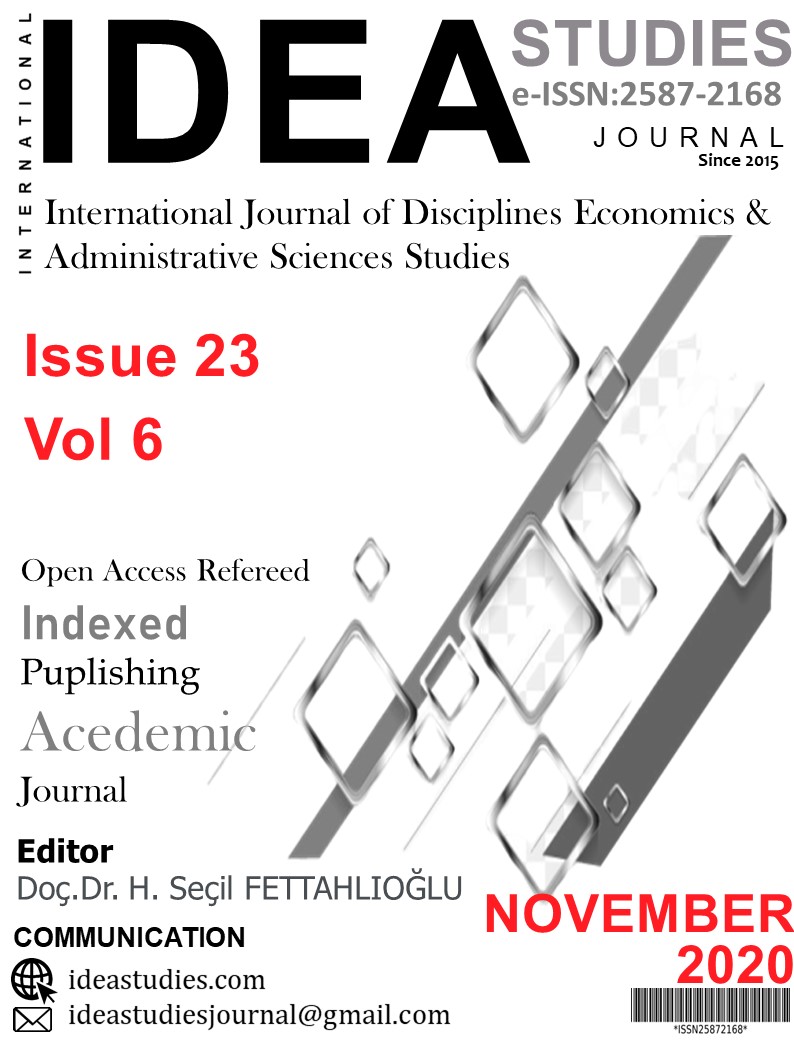Author :
Abstract
Cebu Adasının doğusunda Leyte Adasının batısında ve Mindanao Adasının kuzeyinde yer alan Bohol, Filipinler Cumhuriyeti’nin onuncu büyük adasıdır. Orta Visayas Adalar Grubu’nda yer alan Bohol ilginç mağaralarıyla, görkemli şelaleleriyle, sakin plajlarıyla, çok sayıda müze ve kilisesiyle, gizemli koylarıyla, yoğun mangrov ormanlarıyla, zengin bitki ve hayvan çeşitliliğiyle, şifalı su kaynaklarıyla, çok sayıda doğa koruma alanıyla her yıl binlerce yabancı uyruklu turist ağırlamaktadır. Bu çalışmada Camotes Denizi ile Bohol Denizi arasında yer alan Bohol Adasının başlıca coğrafi özellikleri ve turizm potansiyeli irdelenmiştir. Ayrıca bu çalışmada adanın coğrafi konumu ve coğrafi özellikleri açıklandığı gibi başlıca turizm kaynakları da kısaca ele alınmıştır. Bir yandan adanın başlıca doğal ve tarihsel-kültürel çekicilikleri irdelenmiş diğer yandan da turizm potansiyeli resmedilmeye çalışılmıştır. Çalışmanın sonuç kısmında, Bohol Adasının en büyük turizm avantajları nelerdir sorusuna yanıt aranmıştır.
Keywords
Abstract
Bohol is the tenth largest island of the Republic of the Philippines, located to the west of Leyte Island, to the east of Sebu Island and to the north of Mindanao Island. Bohol, which is situated in the Central Visayas Islands Group, welcomes thousands of foreign tourists every year with its interesting caves, magnificent waterfalls, calm beaches, many museums and churches, mysterious bays, dense mangrove forests, rich plant and animal diversity, healing water resources, and many nature reserves. Nationality welcomes tourists. In the present study, the main geographical features and tourism potential of Bohol Island, which is located between the Camotes Sea and the Bohol Sea, have been examined. Besides, the geographical location and geographical features of the island have been explicated and the main tourism resources have been briefly discussed in this study. While the main natural and historical-cultural attractions of the island were examined on the one hand, we tried, on the other hand, to identify its tourism potential. In the conclusion part of the study, the answer to the question of what are the biggest tourism advantages of Bohol Island has been sought.
Keywords
- Atalay, İ. “Resimli ve Haritalı Dünya Coğrafyası”, İnkılâp Kitabevi, İstanbul, 2001
- Atalay, İ. “Resimli ve Haritalı Dünya Coğrafyası”, İnkılâp Kitabevi, İstanbul, 2001 Atalay, İ., “Kıtalar ve Ülkeler Coğrafyası”, META Basım, İzmir, 2007
- Atasoy, E. “Kıtalar ve Ülkeler Coğrafyası”, Ezgi Kitabevi Yayınları, Bursa, 2010
- Atasoy, E. “Muslim Communities in the Philippines from the Perspective of Political Geography and Etnogeography”, Journal of History Culture and Art Research, Vol. 7, No. 2, June 2018
- Bayar, S., “Filipinler Ülke Raporu”, T.C. Başbakanlık Dış Ticaret Müsteşarlığı İhracatı Geliştirme Merkezi, Ankara, 2011
- Chirikov, A. l., Pozdnyak, G. V., Kamenskaya, İ. Y., Atlas Mira. İzdatelstvo Oniks, Moskova, 2008 Colleen, A. S. “Philippines in Pictures”, Manila, Library of Congress Catakoging, 1967, Cilt 1
- Düzyol, Tamer, “Filipinler”, Ermağan, İsmail (Editör), “Dünya Siyasetinde Doğu Asya”, Nobel Yayınları,Georgiev, P., “Filipinite i Evraziyskata Dıga na Nestabilnost”, Spisanie “Geopolitika”, Broy 6, Sofya, 2005Gier L. Christie P. Amolo R. “Community perceptions of scuba dive tourism development in Bien Unido, Bohol Island, Philippines” , Journal of Coastal Conservation (2017) No: 21, pp. 153–166
- Green S. J. Alexander R. D. Gulayan A. M. “Bohol Island: Its Coastal Envıronment Profıle”, BoholEnvironment Management Office, Bohol and Coastal Resource Management Project, Inc. Prınted In Cebu Cıty, Phılıppınes, 2002
- Krıstev, V., “Geopolitika i Geostrategiya na Turizma”, İzdatelstvo “Nauka i İkonomika”, İkonomiçeski Universitet, Varna, 2016
- Krıstev, V., “Geografiya na Turizma”, İzdatelstvo “Nauka i İkonomika”, İkonomiçeski Universitet, Varna, Lakost, İ., “Geopolitiçeski Reçnik na Sveta”, Izdatelska Kaşta Trud, Sofiya, 2005
- Lavrov, S. B. & Kaledin, N. V., “Ekonomiçeskaya, Sotsialnaya i Politiçeskaya Geografiya Mira. Regioni i Strani”, İzdatelstvo Gardariki, Moskova, 2003
- Lopez, M. L., “A Handbook of Philippine Folklore”, Quezon City, The University of the Philippines Press,2006
- Lukanov, A., Bojinov, N., Dimitrov, S., “Stranite v Sveta 2005-2006”, İzdatelstvo Gloriya Palas, Sofya,2005Manalo J. J. P. “Relevance Of Sustaınable Tourısm In The Phılıppınes: Case Of Boracay Island And PuertoPrıncesa Cıty”, International Journal of Information Research and Review, Vol. 04, Issue, 01, pp.3558-3562, January, 2017
- Manuela W. S. “The İmpact of Government Failure on Tourism in The Philippines”, Transport Policy, Volume 43, October 2015, Pages 11-22
- Özey, R. “Asya Coğrafyası”, Aktif Yayınları, İstanbul, 2008
- Özgüç, N. “Turizm Coğrafyası. Özellikler ve Bölgeler”. Çantay Kitabevi, İstanbul, 2011
- Santos, R. B. Tomeldan M. V. “Case-Based Study of Three Tourism-Dependent Islands in the PhilippinesThe Cases of Boracay Island, Aklan; Puerto Galera, Oriental Mindoro; & Coron, Palawan in thePhilippines”, A Journal of Architecture, Landscape Architecture and the Designed Environment University of the Philippines College of Architecture, Issue No: 3, Philippines, 2009
- Shah K. Gupta V. Edited by Charlotte Boyd “Tourism, the Poor and Other Stakeholders: Experience inAsia”, Overseas Development Institute, Fair Trade in Tourism Project, University of North London, University of North London, UK, Printed by Russell Press Ltd, Nottingham, NG6 0BT, April 2000
- Timor, A. N. “Güneydoğu Asya. Özellikler. Ülkeler”, Çantay Kitabevi, İstanbul, 2002
- Torıllo J. Mıhara M. “Soil Erosion Control by Coconut Husk Buffer Strip in Bohol Island of Philippines”, International Journal of Environmental and Rural Development (2011) 2–1
- Urich P. “Karst Evolution And Social History Of Bohol Island, Philippines”, Nase Jame, No: 39, 1997.Elektronik Kaynaklar
